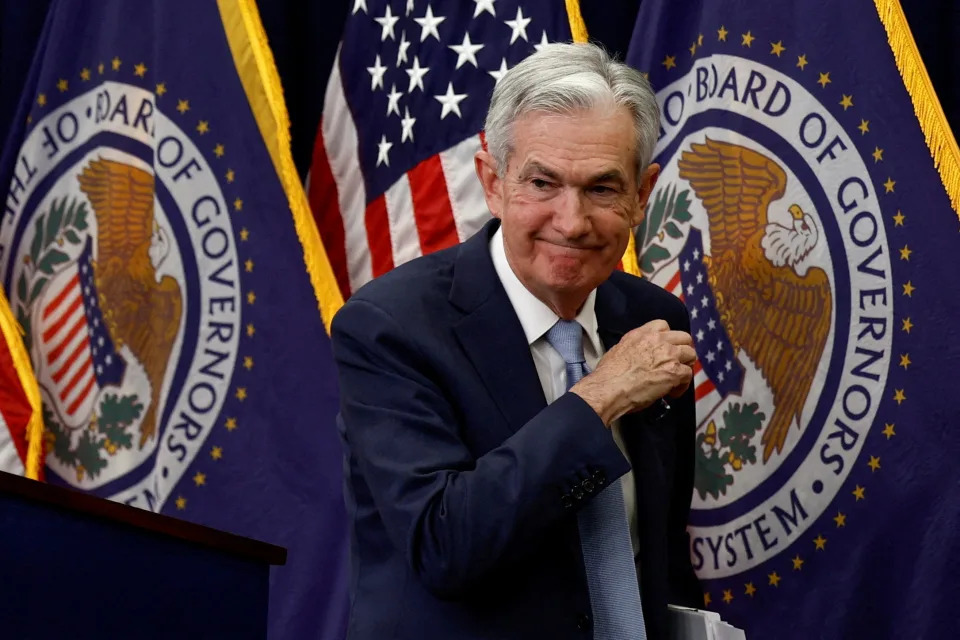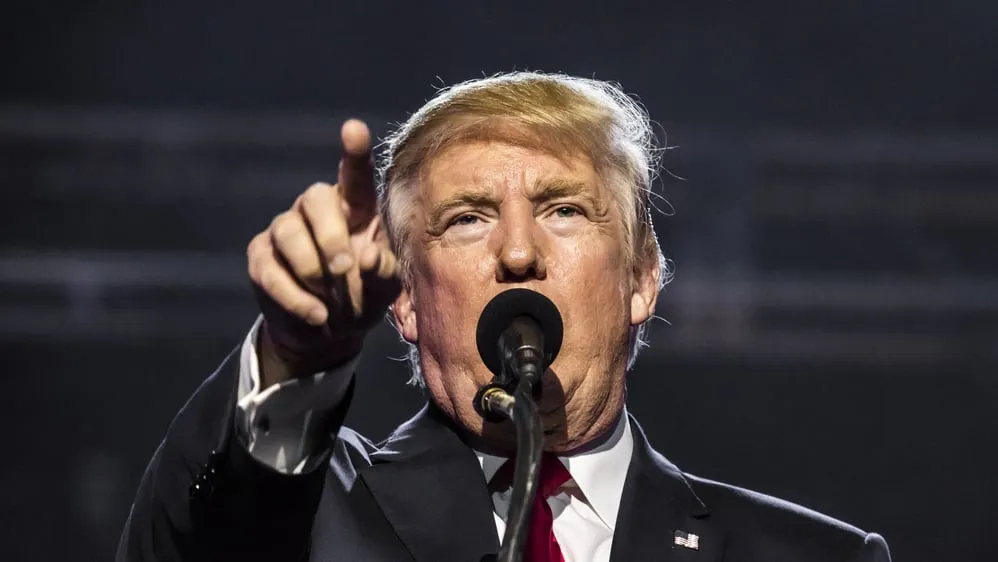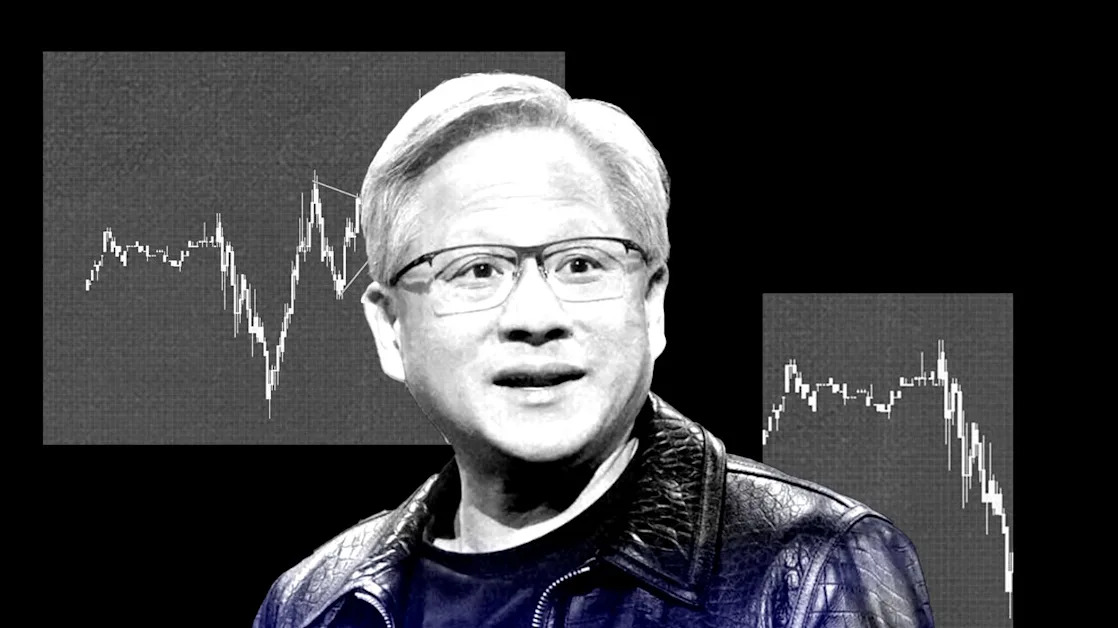A version of this post first appeared on TKer.co
In the context of inflation, was the Federal Reserve late to tighten monetary policy and hike interest rates ? Most would agree the answer is yes.
But the Fed doesn’t have just one mandate of promoting price stability. It has a dual mandate of promoting both price stability and maximum employment.
Taking employment into consideration, it’s less obvious to me that the Fed was late to tighten monetary policy.
I can’t pinpoint exactly when the calls to tighten began when inflation was heating up three years ago. But we can all agree that these calls grew loudest ahead of the Fed’s first rate hike in March 2022 .
The core PCE price index — the Fed’s preferred measure of inflation — was at a high of 5.5% in March 2022. Clearly, inflation was a problem.
That same month, the unemployment rate was 3.6%, the lowest level since before the pandemic.
The unemployment rate effectively bottomed that month, mostly trending sideways as inflation rates cooled.
What if the Fed acted earlier?
I generally don’t like considering counterfactual scenarios because the world is complex, and no one can say with certainty what would’ve actually happened in the past if certain things had gone differently. But since we continue to hear folks casually say that we would’ve been better off if the Fed acted earlier, I’ll indulge in the thought exercise.
What if the Fed hiked rates at its January 2022 meeting? Maybe our inflation mess would’ve ended a little sooner. But the unemployment rate was higher at 4%. Would we have been okay with the unemployment rate trending at 4%? Maybe.
What if we went back a little further, and the Fed hiked rates at its October/November 2021 meeting? The core PCE price index was increasing at about a 4.5% rate. Price-sensitive consumers would’ve been much happier to see inflation top out there. But the unemployment rate was higher at about 4.5%. Does the cost of keeping unemployment almost a full percentage point higher justify the benefit of keeping prices a bit cooler?
What if the Fed moved even sooner when the unemployment rate was even higher?
The big picture
Here’s my point: While it’s fair to argue the Fed hiked rates too late in the context of inflation, I don’t think it’s fair to argue they made a mistake — especially when you consider the goals of monetary policy in their entirety, which include promoting maximum employment.
While high inflation is a headache for consumers, at least some of it was the result of newly employed people finally being able to afford to purchase goods and services.
Like I said before, the world is complex. So who knows? Maybe there’s a scenario where the Fed tightened monetary policy sooner and the unemployment rate continued to fall anyway as inflation cooled.
But the likely outcome of tighter monetary policy earlier in this economic cycle would have been unemployment bottoming at a higher level than what we’ve experienced.

I’m not suggesting the Fed was right or wrong to adjust monetary policy when it did. I’m just saying that you cannot talk about how monetary policy actions affect inflation without addressing how they affect employment.
How about instead of proclaiming that the Fed was late in the context of inflation — which is not a controversial view — we instead tackle the philosophical question of how we balance the tradeoff between price stability and employment. How many people is it okay to leave unemployed if it means improving price stability?
The state of play
Over the past two and a half years, inflation rates have cooled significantly . And while the unemployment rate remains low by historical standards, it has been trending a bit higher .
Last month when the unemployment rate was 4.3%, Fed Chair Jerome Powell said : “We do not seek or welcome further cooling in labor market conditions.“
“The time has come for policy to adjust,” he added . It was one of the more explicit signals that rate cuts would begin soon, a development most market participants welcome.
Of course, there are also voices brushing off the rise in unemployment as they argue that the Fed should wait longer until inflation is defeated more definitively.
Reviewing the macro crosscurrents
There were a few notable data points and macroeconomic developments from last week to consider:
The labor market continues to add jobs . According to the BLS’s Employment Situation report released Friday, U.S. employers added 142,000 jobs in August. It was the 44th straight month of gains, reaffirming an economy with growing demand for labor.
Total payroll employment is at a record 158.8 million jobs, up 6.4 million from the prepandemic high.
The unemployment rate — that is, the number of workers who identify as unemployed as a percentage of the civilian labor force — declined to 4.2% during the month. While it continues to hover near 50-year lows, the metric is near its highest level since October 2021.
While the major metrics continue to reflect job growth and low unemployment, the labor market isn’t as hot as it used to be.
Wage growth ticks up . Average hourly earnings rose by 0.4% month-over-month in August, up from the 0.2% pace in July. On a year-over-year basis, this metric is up 3.8%, near the lowest rate since June 2021.
Job openings fall . According to the BLS’s Job Openings and Labor Turnover Survey , employers had 7.76 million job openings in July, down from 7.91 million in June. While this remains slightly above prepandemic levels, it’s down significantly from the March 2022 high of 12.18 million.
During the period, there were 7.16 million unemployed people — meaning there were 1.07 job openings per unemployed person. Once a sign of excess demand for labor , this telling metric is now below prepandemic levels.
Layoffs remain depressed . Employers laid off 1.76 million people in July. While challenging for all those affected, this figure represents just 1.1% of total employment. This metric continues to trend near pre-pandemic low levels.
Hiring activity continues to be much higher than layoff activity. During the month, employers hired 5.52 million people, up from 5.25 million in June.
People are quitting less . In July, 3.28 million workers quit their jobs. This represents 2.1% of the workforce. While up from the prior month, it remains below the prepandemic trend.
A low quits rate could mean a number of things: more people are satisfied with their job; workers have fewer outside job opportunities; wage growth is cooling; productivity will improve as fewer people are entering new unfamiliar roles.
Labor productivity inches up . From the BLS : “Nonfarm business sector labor productivity increased 2.5% in the second quarter of 2024… as output increased 3.5 percent and hours worked increased 1.0%. … From the same quarter a year ago, nonfarm business sector labor productivity increased 2.7%.”
Unemployment claims ticked lower . Initial claims for unemployment benefits declined to 227,000 during the week ending August 31, down from 232,000 the week prior. While this metric continues to be at levels historically associated with economic growth, recent prints have been trending higher.
Card spending data is stable . From Bank of America: “Total card spending per household was up 2.8% y/y in week ending Aug 31, according to BAC aggregated credit & debit card data. This increase was likely driven by the change in the timing of Labor Day compared to last year (09/02/24 versus 09/04/24). Within sectors, furniture saw the biggest increase since last week, while entertainment showed the largest decline.”
Gas prices fall . From AAA : “After idling over the Labor Day weekend, the national average for a gallon of gas resumed its pace of daily declines by falling six cents since last week to $3.30. Key contributors are low gas demand and the plunging cost of oil, which is struggling to stay above $70 a barrel.”
Mortgage rates hold steady . According to Freddie Mac , the average 30-year fixed-rate mortgage stood at 6.35% this week. From Freddie Mac: “Even though rates have come down over the summer, home sales have been lackluster. On the refinance side however, homeowners who bought in recent years are taking advantage of declining mortgage rates in order to lower their monthly payments.”
There are 146 million housing units in the U.S., of which 86 million are owner-occupied and 39% of which are mortgage-free . Of those carrying mortgage debt, almost all have fixed-rate mortgages , and most of those mortgages have rates that were locked in before rates surged from 2021 lows. All of this is to say: Most homeowners are not particularly sensitive to movements in home prices or mortgage rates.
Construction spending ticks lower . Construction spending declined 0.3% to an annual rate of $2.16 trillion in July.
Services surveys look up . From S&P Global’s August U.S. Services PMI : “An improvement in the headline services PMI to its highest for nearly two-and-a-half years provides further encouraging evidence that the US economy is enjoying robust economic growth in the third quarter, adding to signs of a ‘soft landing’. The faster service sector expansion means the PMI surveys are signalling GDP growth of 2-2.5% in the third quarter. At the same time, the August survey data signaled a further cooling of selling price inflation, notably in the service sector, which has now eased close to the average seen prior to the pandemic and a level consistent with the Fed’s 2% inflation target.”
Manufacturing surveys don’t look great . From S&P Global’s August U.S. Manufacturing PMI : “A further downward lurch in the PMI points to the manufacturing sector acting as an increased drag on the economy midway through the third quarter. Forward-looking indicators suggest this drag could intensify in the coming months. Slower than expected sales are causing warehouses to fill with unsold stock, and a dearth of new orders has prompted factories to cut production for the first time since January. Producers are also reducing payroll numbers for the first time this year and buying fewer inputs amid concerns about excess capacity.”
Similarly, the ISM’s August Manufacturing PMI signaled contraction in the industry.
Keep in mind that during times of perceived stress, soft survey data tends to be more exaggerated than hard data.
Factory orders jump . According to the Census Bureau , new orders for manufactured goods rose 5% to $592.1 billion in July.
Key recession indicators point to growth . Here’s a great chart from economist Justin Wolfers tracking the trajectory of key measures of economic activity.
Near-term GDP growth estimates remain positive . The Atlanta Fed’s GDPNow model sees real GDP growth climbing at a 2.1% rate in Q3.
Putting it all together
We continue to get evidence that we are experiencing a bullish “Goldilocks” soft landing scenario where inflation cools to manageable levels without the economy having to sink into recession .
This comes as the Federal Reserve continues to employ very tight monetary policy in its ongoing effort to get inflation under control . Though, with inflation rates having come down significantly from their 2022 highs, the Fed has taken a less hawkish tone in recent months , even signaling that rate cuts could come later this year .
It would take a number of rate cuts before we’d characterize monetary policy as being loose, which means we should be prepared for relatively tight financial conditions (e.g., higher interest rates, tighter lending standards, and lower stock valuations) to linger. All this means monetary policy will be relatively unfriendly to markets for the time being, and the risk the economy slips into a recession will be relatively elevated.
At the same time, we also know that stocks are discounting mechanisms — meaning that prices will have bottomed before the Fed signals a major dovish turn in monetary policy .
Also, it’s important to remember that while recession risks may be elevated, consumers are coming from a very strong financial position . Unemployed people are getting jobs , and those with jobs are getting raises.
Similarly, business finances are healthy as many corporations locked in low interest rates on their debt in recent years . Even as the threat of higher debt servicing costs looms, elevated profit margins give corporations room to absorb higher costs.
At this point, any downturn is unlikely to turn into economic calamity given that the financial health of consumers and businesses remains very strong .
And as always, long-term investors should remember that recessions and bear markets are just part of the deal when you enter the stock market with the aim of generating long-term returns. While markets have recently had some bumpy years , the long-run outlook for stocks remains positive .
A version of this post first appeared on TKer.co





